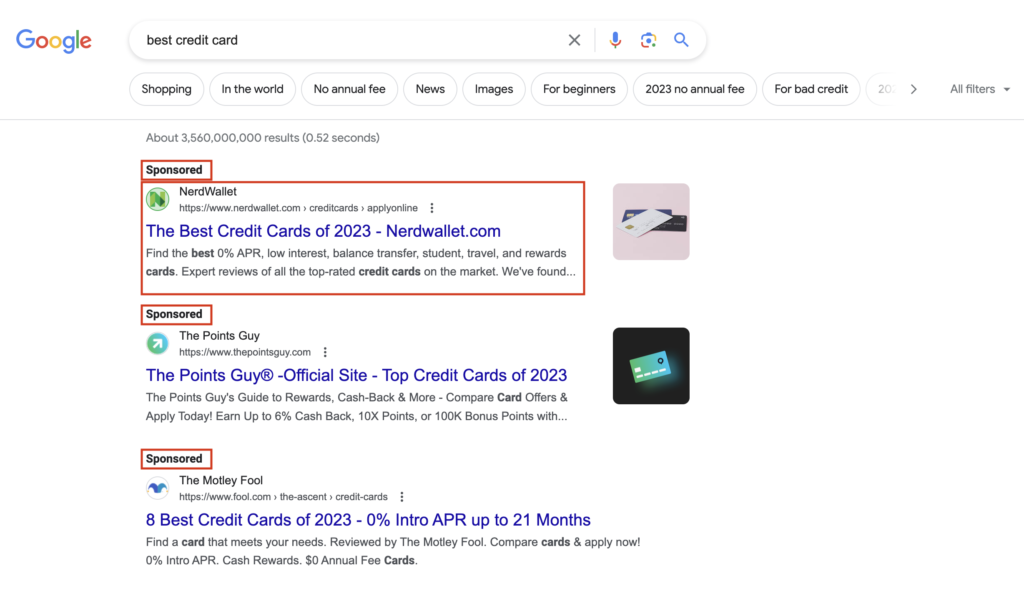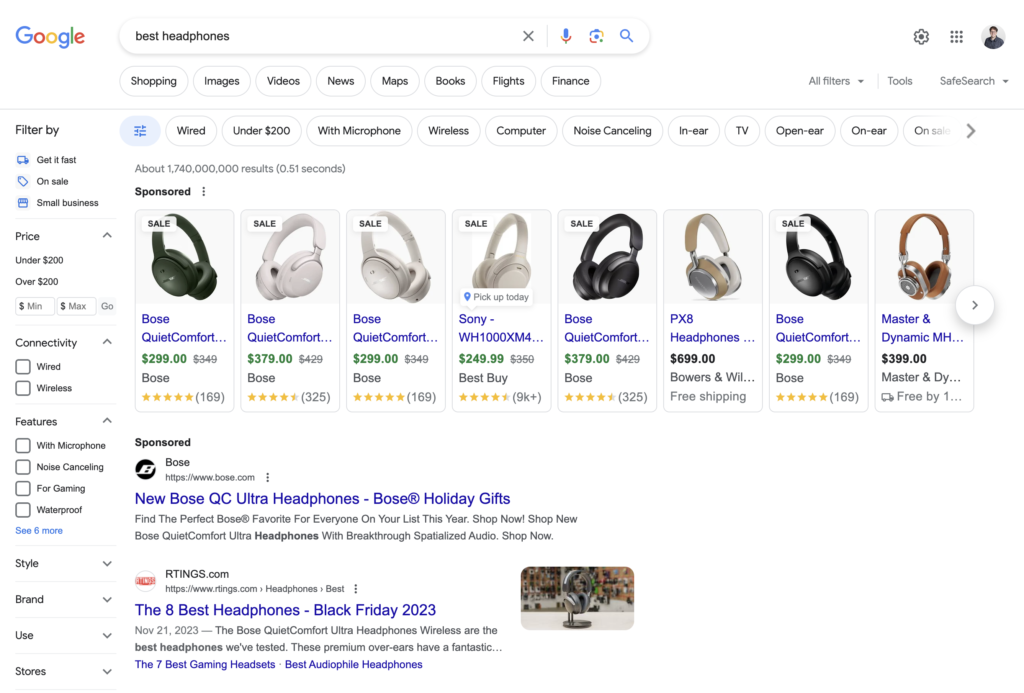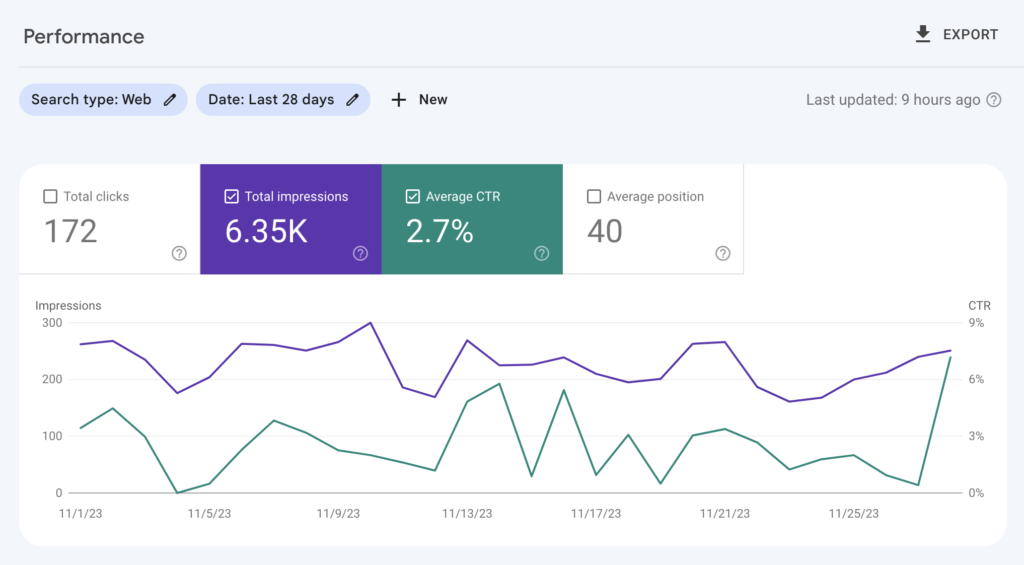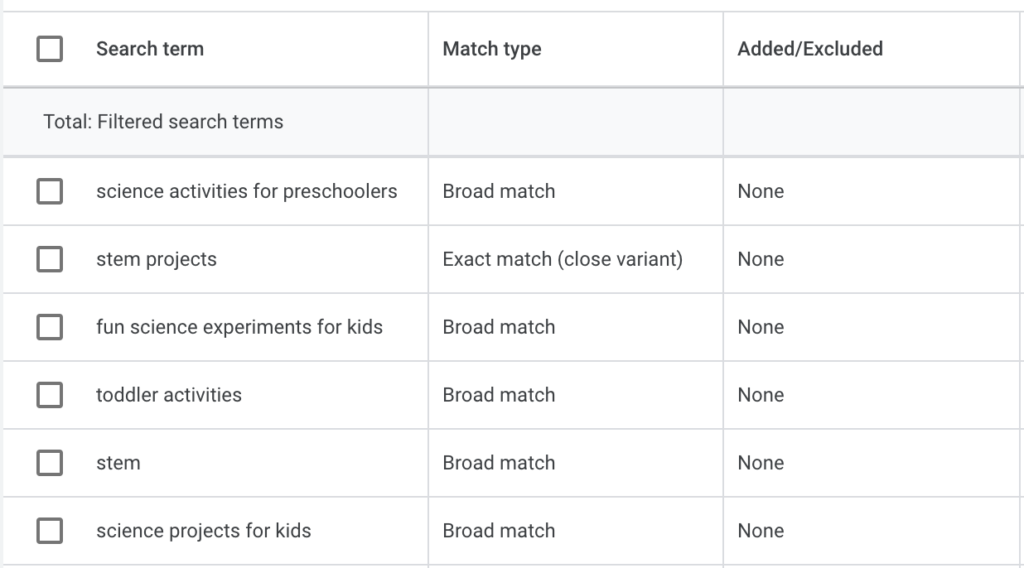December 20, 2023
A Match Made in Heaven: How SEO and PPC Work Together
Search engine optimization (SEO) and pay-per-click (PPC) advertising are usually seen as two distinct strategies. But what if I told you that these two powerful tools can work together to drive more traffic, sales, and growth?
In this article, we’ll share our top 5 tactics for combining your SEO and PPC marketing efforts to exponentially grow your traffic and maximize your digital marketing ROI.
What’s the Difference Between SEO and PPC?
Before we jump into the tactics, let’s take a minute to understand what these two strategies aim to do on their own.
What Is SEO?
Search engine optimization is all about improving your website’s visibility in search engines (such as Google and Bing). This usually involves some combination of the following:
- Keyword Research (what terms will you rank for?)
- Content Writing (home page, service/product pages, blog posts, etc.)
- On-Page SEO (optimizing title tags, headings, descriptions, images, and more)
- Off-Page SEO (link building and PR)
- Technical SEO (ensuring your code is clean, efficient, and indexable)
Typically, SEO campaigns are considered to be a long-term strategy as it takes time to write content and optimize pages and website performance. Newer domains tend to have a harder time ranking for keywords than older, more established sites—even if their content is better overall.
The main advantage of SEO is that it offers businesses free, recurring traffic month after month. While SEO tends to have the best ROI in digital marketing, it takes time to grow.
What Is PPC?

Pay-per-click is a model of digital advertising where you pay each time someone clicks on one of your ads. Whether it’s Google Ads, Facebook, LinkedIn, or elsewhere, you only pay for the traffic that comes to your site.
How much you pay varies wildly by industry, as well as, the quality of your ads and landing pages, but it’s great for getting sales and leads flowing into your pipeline in days, not months. This makes PPC a great short-term strategy for growing your revenue (as long as you can afford it). If you’re able to improve your ads and lower your ROI over time, PPC can also be used for the long-term growth of your business.
Does PPC Advertising Improve Your SEO Ranking?
The short answer is no—paying for PPC ads will not directly improve your organic ranking. Google maintains that these are distinct marketing activities, and they don’t play favorites with those businesses who spend more with them. It’s not in their long-term interest to provide low-quality search results to their users.
That said, once you begin advertising, you’re more likely to invest in your website copy and design, improve your brand awareness, and attract backlinks to your website—all of which can improve your overall website rankings.
5 Tactics to Make SEO and PPC Work Together
Now that we’re clear on the differences between SEO and PPC, let’s look at 5 different ways you can combine your PPC and SEO efforts to grow your business.
1. Maximize Your Coverage in the SERPs
It’s getting harder to show up at the top of Google. Not only is there more competition, but with ads, maps, videos, and shopping results, there’s just more noise than ever before.

It’s estimated that paid ads receive up to 6% of the clicks on the search results page. For local searches, listings on the “Map Pack” receive around 40%, and organic search results account for 30%. Web pages targeting keywords based on informational, non-local content without video or shopping content do much better, receiving the majority of click share.
What this means for businesses is that the more you’re able to appear in the different sections of the search page, the better you’ll do in terms of both traffic and brand awareness. This means investing in PPC advertising for high-priority keywords and using structured data and other SEO tactics to stand out in searches that display rich snippets to users.
2. Use PPC Data to Improve Organic Engagement
With PPC advertising, you’re able to test different variations of headlines, descriptions, and landing page URLs quickly. All of this data is recorded and available for review across most advertising platforms. One way to use the PPC data to improve your SEO is by studying your click-through rate.
Here’s how:
- Review your PPC campaign data to find out which ads received the highest click-through rate (the percentage of visitors that click through to your website).
- Apply the same or similar wording to your SEO metadata (title tags and meta description—you can edit this in a WordPress SEO plugin like Yoast).
- Wait 7–14 days, and check your click-through rates in Google Search Console.

Try out different variations of your winning ads in your SEO metadata, and track your click-through rates to find the best version for your web pages.
3. Use PPC Conversion Data to Find Lucrative SEO Keywords
You never really know what people will type into Google that will lead to an eventual purchase. That’s why it’s essential to review your Google Ads Search Terms report to see which terms most frequently led to a conversion.
To do this, visit your Google Ads dashboard, and click Insights > Search Terms.

Look for search terms people typed in that led to a conversion. Search terms are different from keywords in that they’re the actual phrases users typed into Google—not the keywords you asked your ads to be shown for.
For example, if you’ve set “HVAC repair” as your keyword, but find most of your conversions are coming from the term “AC repair,” then you know that targeting AC-related terms on your website will lead to better conversions.
4. Leverage Retargeting to Get More Out of Your Organic Traffic
Have you ever put something into an online shopping cart and left without buying it? Chances are that you were then shown display ads for that same product across the internet for days (or weeks) afterward.
That’s retargeting—advertising to users who have already visited your website, and it’s powerful.
Studies show retargeting conversion rates are 147% higher than using traditional ads alone. The reason why is simple—you’re advertising to someone who’s already interested in you. It’s also one of the most cost-effective ways to advertise as you’re not competing against every other company for your customer’s attention.
Let’s say you have a great organic ranking for a competitive search term like “lightweight yoga mat.” Google Analytics might show you that only 2% of your visitors buy from you, which is lower than you’d like. By running a low-cost retargeting campaign for those who didn’t buy, you’re able to generate more revenue from your current traffic without having to pay full price for a competitive PPC keyword.
5. Combine Paid and Organic Keywords to Cover the Complete Buyer Journey
For both SEO and PPC, great keyword research is all about understanding intent. Your potential customers might be at different stages in the buying process, and the keywords that will target them need to reflect their current intent.
When it comes to keywords, the main 4 types of search intent are:
- Navigational: Finding a page (e.g. “Facebook login”)
- Informational: Learning about something (e.g. “how to get rid of mice”)
- Commercial: Research before making a decision (e.g. “best wireless headphones”)
- Transactional: Complete a specific action (e.g. “used Ford F-150 for sale”)
As you might imagine, ranking organically for commercial and transactional is highly competitive, so a typical SEO strategy usually involves starting with informational content to reach customers earlier in the buying journey and fill the top of the sales funnel.
By adding PPC to target high-converting keywords, you’ll be able to reach customers later in the buying journey when they’re most likely to convert. While the cost-per-click on these search terms is typically higher than informational keywords, they may well be worth targeting depending on your customer lifetime value and your typical closing/conversion rate.
Need Help Creating Your SEO and PPC Marketing Strategy?
The combination of SEO and PPC holds immense potential for businesses seeking to boost their online presence and drive exponential growth. While these strategies are typically handled separately, managing them holistically can significantly amplify traffic, enhance brand visibility, and maximize your digital marketing returns.
If you need help from an experienced digital marketing team to harmonize your SEO and PPC efforts, reach out to us here at PHOS.







